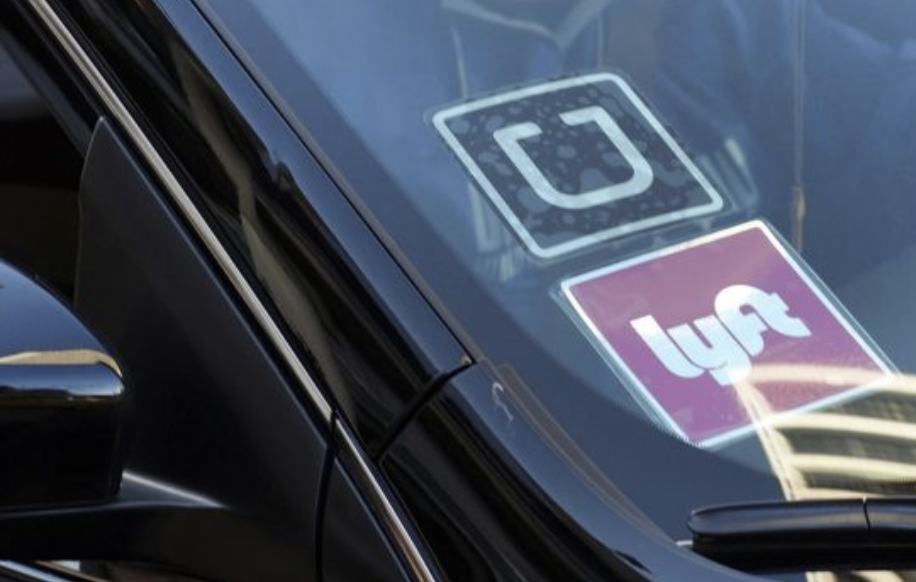Uber, Lyft Revenues Drop By Staggering 50% Due To Coronavirus Outbreak
The one-time IPO darlings of yesteryear are about to take another beating.
We already knew that the COVID-19 pandemic would deliver a huge blow to the so-called ‘sharing economy’, at least in the short term,as Airbnb to permanently delay plans for an IPO and pledge hundreds of millions of dollars to offset the costs of cancellations and bail out its most ‘highly leveraged’ hosts. And on Thursday, tech news outfit the Information reported that revenues for both Uber and Lyft have sunk by roughly 50% YoY in just a matter of weeks as companies begin the painful process of preparing their Q1 earnings reports.
The hit was so intense, that Uber’s revenue from passenger rides (minus pay) could come in at under $450 million a month for Q1, down nearly 40% from $800 million a month last year, according to the report.
And Lyft’s passenger revenue is expected to come in below $150 million a month, down from $260 million a month.
When it comes down to who is better prepared, Uber can at least lean on Uber Eats, which has shown global bookings growth of more than 50% in the last year (which will likely skyrocket now that so many are opting to order in). Though over the long term, that might not make much of a difference.
Bank of America analysts raised some of this issues in a research note shared with clients earlier this month.
Conditions likely to decline as quarantine orders kick in:
Today, Uber CFO Nelson Chai provided some updates (but no new guidance) regarding the impact from Coronavirus, indicating Uber has seen increasing negative impact on Rides during the last week & a half from a decrease work commuting and other activities, with bookings in Seattle down 40-50%. Also, the Bay Area has just issued a 3 week shelter in place order and we expect a growing quarantine impact on Rides, with 2Q the low point. In Hong Kong, the peak-to-trough impact was -45% during the last week of Jan., rides are now tracking down 30% (some recovery), and we expect Uber’s business to normalize once the outbreak is contained and people are back to work.
Lowering estimates for growing impact on Rides business:
We are lowering 1Q’20 Rides bookings by 10%, 2Q by 40%, and 3Q by 25%. Our changes imply a trough in 2Q (rolling 4-6 week quarantines in major cities) & gradual recovery thereafter, mirroring trends in Hong Kong. We decrease our 2020 Rides Bookings Estimate by 21%, from $56.5bn to $44.7bn. We roughly maintain our Eats bookings estimate, but decrease take rates due to the Free Delivery offering (’20 ANR down 5%). For 2020, we decrease Total ANR from $16.7bn to $13.6bn, and increase the EBITDA loss from $1.3bn to $2.3bn. For 2021, we lower bookings by 6% and continue to model positive EBITDA. Importantly, after including over $2bn in cash payments for Careem we estimate that Uber will exit 2020 with over $5.6bn in cash on balance sheet. We expect modest FCF loss in 2021 of $700mn, before Uber turns FCF positive in 2022.
As legendary hedge fund investor Jim Chanos said earlier during an interview with CNBC’s “Halftime Report” Thursday, “are going to come out of this ‘harmed’, not ‘enhanced’.”
While he acknowledged that there’s a “school of thought” believing it will be an unprecedented boon for the industry since people aren’t going to go back to restaurants or take public transit, there are a lot of issues that the market hasn’t really thought through, Chanos said.
For example, while lawmakers were hammering out the $2 trillion stimulus bill, Uber CEO Dara Khosrowshahi had to appeal directly to lawmakers to find a workaround that would extend unemployment benefits to full-time Uber drivers and other gig economy workers. The problem is that since these workers aren’t classified as regular employees, those payments will fall directly on taxpayers shoulders. This could bring on more policy scrutiny: Uber is already fighting a California law forcing it to treat drivers like regular employees. Pretty soon, that could become the law of the land.
“I think both political parties are going to be looking at that pretty hard coming out of the crisis to enhance corporate responsibility in lots of different ways whether it’s keeping employees as independent contractors, whether its restricting buybacks,” Chanos said.
Additionally, when it comes to food-delivery services like GrubHub and Uber Eats, Chanos said whether they can ever be profitable remains an open question. As Chanos sees it, the problem is still essentially the same as it was when the WSJ ran its big series on the future of food delivery a year ago: No matter how much businesses like UberEats and GrubHub can scale, individual drivers can still only deliver 2-4 meals an hour, tops. There’s only so much efficiency they can wring out of these drivers, and at a certain point, if GrubHub and other companies start demanding larger shares of the revenue pie, restaurants might start walking away.
Tyler Durden
Thu, 04/02/2020 – 16:30
